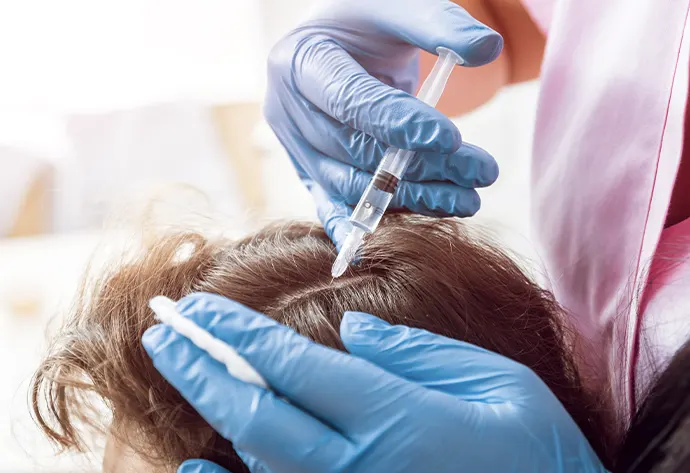Hair loss has long been one of the most frustrating issues faced by both men and women. Traditional treatments like shampoos, supplements, and topical solutions have yielded mixed results, often leaving people discouraged and searching for a better solution. But now, a new era in hair restoration has arrived — and it’s transforming expectations from the scalp up. One of the most promising breakthroughs is Scalp Reboot, a cutting-edge form of regenerative therapy that leverages the healing power of your own biology. This next-gen procedure builds upon the success of hair platelet rich plasma technology, offering a more advanced and efficient way to combat thinning and revitalize hair growth.
A Biological Revolution in Hair Restoration
Scalp Reboot isn’t just a rebranded PRP treatment — it’s a comprehensive biological innovation. While traditional PRP involves extracting your blood, spinning it in a centrifuge to separate the platelets, and re-injecting it into your scalp, Scalp Reboot enhances every step of that process. From upgraded centrifugation systems to refined delivery methods, the procedure now targets not just dormant follicles but also microenvironments in the scalp that influence growth.
What makes Scalp Reboot truly next-gen is the inclusion of growth factor optimization. This means that the concentrated plasma is enriched with a higher yield of specific bioactive proteins and signaling molecules that are directly linked to follicular regeneration. Some clinics also combine the procedure with microneedling, peptides, or light therapy to improve absorption and stimulate deeper biological responses. The result? More robust hair regrowth in less time, with fewer sessions required than older PRP methods.
Why Traditional PRP Wasn’t Enough
While traditional PRP was a step in the right direction, it had limitations. Inconsistent results, variable platelet concentrations, and outdated injection techniques often led to underwhelming outcomes. Patients sometimes needed numerous sessions over many months just to see modest improvement.
Scalp Reboot changes that dynamic by introducing consistency and precision. The treatment now uses smart diagnostics to map out thinning zones more accurately. Advanced centrifuge protocols ensure the highest concentration of platelets with minimal white blood cell contamination, which could otherwise lead to inflammation. Combined with real-time scalp analytics, Scalp Reboot allows practitioners to personalize the treatment based on follicular density, hormonal patterns, and even genetic predispositions — making it far more effective for a wider range of hair loss conditions.
The Science Behind Better Results
What sets Scalp Reboot apart is its scientific rigor. The growth factors in platelets — such as PDGF (platelet-derived growth factor), VEGF (vascular endothelial growth factor), and EGF (epidermal growth factor) — are crucial for tissue regeneration. Scalp Reboot doesn’t just concentrate these factors but preserves them in an active form, increasing their bioavailability to the scalp.
Moreover, advanced delivery systems like electroporation or high-pressure microinjections are now used to ensure these growth factors reach the base of the hair follicle. This dramatically improves cellular uptake and encourages follicular stem cells to re-enter the growth (anagen) phase. It’s no longer about simply flooding the area with platelets — it’s about targeted cellular stimulation and deep rejuvenation.
Additionally, by addressing underlying inflammation and improving scalp vascularization, Scalp Reboot helps create a healthier scalp biome. This not only boosts hair regrowth but also improves hair quality, making strands thicker, shinier, and more resilient.
Who Can Benefit the Most?
One of the greatest advantages of Scalp Reboot is its broad applicability. It can be used by both men and women and is effective for a range of hair loss types — from androgenic alopecia to stress-related shedding and post-partum thinning. Even individuals with early-stage balding or those who’ve had hair transplants can benefit from the treatment to enhance follicle survival and growth.
Scalp Reboot is also ideal for patients who want a drug-free and surgery-free option. Unlike finasteride or minoxidil, it doesn’t carry the risk of systemic side effects. And unlike hair transplants, it doesn’t require incisions, downtime, or a long recovery period. Sessions typically take under an hour, with minimal discomfort and no need for time off work.
However, like any regenerative therapy, success depends on timing and consistency. Early intervention often yields the best results, and most patients see noticeable improvement within 3 to 6 months. Maintenance treatments every 6 to 12 months may be recommended depending on individual progress.
The Future of Hair Health
As we move deeper into the age of personalized and regenerative medicine, Scalp Reboot represents a significant shift in how we approach hair restoration. It’s not just about reversing visible hair loss but restoring the entire scalp ecosystem for long-term vitality. With AI-guided diagnostics, enriched plasma biology, and minimally invasive delivery systems, the treatment aligns with the growing demand for precision health and natural-looking outcomes.
For those seeking a future-proof solution to hair thinning, Scalp Reboot is not just a treatment — it’s a strategy. It respects the complexity of hair biology and delivers a multifaceted response that traditional approaches simply can’t match. In a world where appearance, confidence, and well-being are deeply intertwined, Scalp Reboot is changing the game one follicle at a time.





